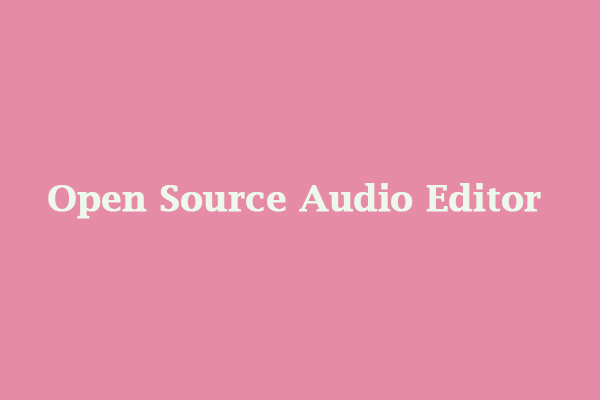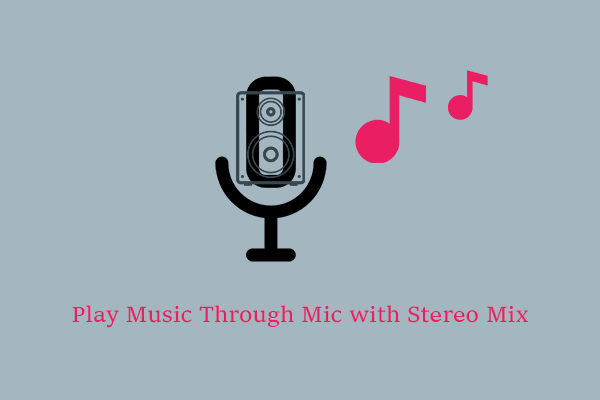In this post published by MiniTool MovieMaker (a free video editor), we will discuss sound editing vs sound mixing in great detail. Scroll down if you are interested.
The sounds you hear in films are multi-layered from dialogue to music. In most cases, the sounds are combined in post-production to create an immersive aural experience that requires a large effort by multiple teams – specifically sound editing and sound mixing.
Despite the Academy of Motion Picture Arts and Sciences’ recent decision to combine two very different roles into one award category, sound mixing and sound editing are definitely distinct from one another. We’re here to clarify the difference between sound mixing and sound editing.
Sound Mixing vs Sound Editing: Understanding the Difference
Now, let’s look at sound editing vs sound mixing.
Sound Editing
Sound editing is the post-production process of gathering, tweaking, producing, and re-recording all the audio that makes up the sound design of a movie. The sound editor is responsible for putting together all the sound that accompanies the visual footage, including the dialogue captured on set, extra dialogue, music, sound effects, and ambient noise.
The elements of sound editing are:
- Dialogue. One of the key responsibilities of the sound editor is to select and assemble the appropriate dialogue tracks. Dialogue is usually captured on set. This is a matter of correctly matching the best clip to the shots the director selects.
- ADR. ADR (automated dialogue replacement) is the process of re-recording unusable or extra dialogue after filming has been completed. As soon as the required dialogue is recorded, the sound mixer ensures that the new sound mixes with other elements to create a seamless experience.
- Music. This involves working closely with the composer and music editor to determine how to integrate the soundtrack and score into the scenes.
- Sound effects. To improve the imagery, the editor includes the essential sound effects. These are more common noises, often sourced from a library, like a gunshot, a car engine, or a door closing.
- Foley. Editors turn to the Foley department for more particular sound effects. Foley artists watch the footage and try to recreate specific sounds in time with the movement, like footsteps or fingers brushing against a coat.
- Background ambience. Rain, waves breaking on the shore, or even the quiet talk of people in a crowded restaurant adds an immersive layer to the sound design of a project. This sometimes requires field recording, which, as the name implies, involves going out “into the field” to record natural ambient noise.
MiniTool MovieMakerClick to Download100%Clean & Safe
Sound Mixing
Sound mixing is the process by which the raw resources that have been assembled in the sound editing process are combined and balanced to create a cohesive soundscape. If sound editing is ensuring all of the sounds are available and in the right place, sound mixing is making sure it all sounds right.
The elements of sound mixing are:
- Level adjustment. An important part of mixing is balancing and adjusting sound levels. The mixer ensures that each audio component in the scene is at the proper volume and does not interfere with the others. A café’s background noise does not drown out the primary characters’ dialogue; the score enriches a dramatic moment rather than overwhelming it; the sound of a car’s engine is not louder than the conversation in the front seat.
- Add effects to audio. A ton of the assembled effects are raw and unmodified during the sound editing process. The sound mixer can add audio effects to make them sound natural in the scene’s environment. For instance, adding reverb to footsteps seamlessly blends them into a scene set in an echoing hallway.
- Blending frequencies. Sound mixing entails more than just adjusting the volume. Mixers must mix sounds of all the different frequencies, giving the overall soundscape a natural harmonious depth.
- Mixing in stereo. One of the more complicated parts of sound mixing is placing audio at the right “depth” or “width.” For instance, the sound of a storm in the distance should sound farther away, or deeper into the frame, than the sound of a match being lit in a close-up. This process usually involves panning or making sure a sound moves naturally from one side of the frame to the other in order to match movement.
Conclusion
Sound editing vs sound mixing, what is the difference? You should have a deeper understanding of both after reading the content introduced above.




User Comments :